
Railways tend to work best when they are reasonably flat and level, but unfortunately for engineers, the world was not formed with railways in mind. Throughout the history of rail, new solutions have been developed to overcome natural (or now, urban) geography. Whereas these would originally involve railways winding their way up and over mountains, as technology has advanced, tunnelling has become more viable, to the point where the longest railway tunnels in the world now span over 50km.
One of the oldest techniques is the cut-and-cover method, commonly used to build several sections of the London Underground. For tunnels that need to pass through mountains, drilling and blasting is a more practical method, using the controlled use of explosives or other methods, such as gas pressure blasting pyrotechnics, to break through hard rock formations.
It was the invention of the tunnel boring machine (TBM) by engineering luminary Marc Isambard Brunel that made the construction of railway tunnels faster, cheaper, and safer. Nowadays, these huge machines allow for the construction of the longest railway tunnels in the world, as they can span a diameter of up to 17m and over 150m in length, weighing thousands of tonnes.
The longest railway tunnels in the world will change in the near future, with several current projects due to be completed in the next decade, including the 57.5km Mont d’Ambin Base Tunnel and 55km Brenner Base Tunnel, both crossing the Swiss Alps; as well as the 42.4km Yigong Tunnel and 37.9km Sejila Mountain Tunnel in China.
In the short term, two major projects are due to be completed in the coming years that will rank the ten longest railway tunnels in the world list. The Shanghai Airport Tunnel, due to be completed in 2025, is a 60.5km tunnel section of the Shanghai Airport link line; and the 36km Pearl River Tunnel, part of the Guangzhou–Foshan circular intercity railway, is due to finish construction in 2023.
So with that in mind, here are the ten longest railway tunnels in the world right now, ranked by length.
How well do you really know your competitors?
Access the most comprehensive Company Profiles on the market, powered by GlobalData. Save hours of research. Gain competitive edge.

Thank you!
Your download email will arrive shortly
Not ready to buy yet? Download a free sample
We are confident about the unique quality of our Company Profiles. However, we want you to make the most beneficial decision for your business, so we offer a free sample that you can download by submitting the below form
By GlobalData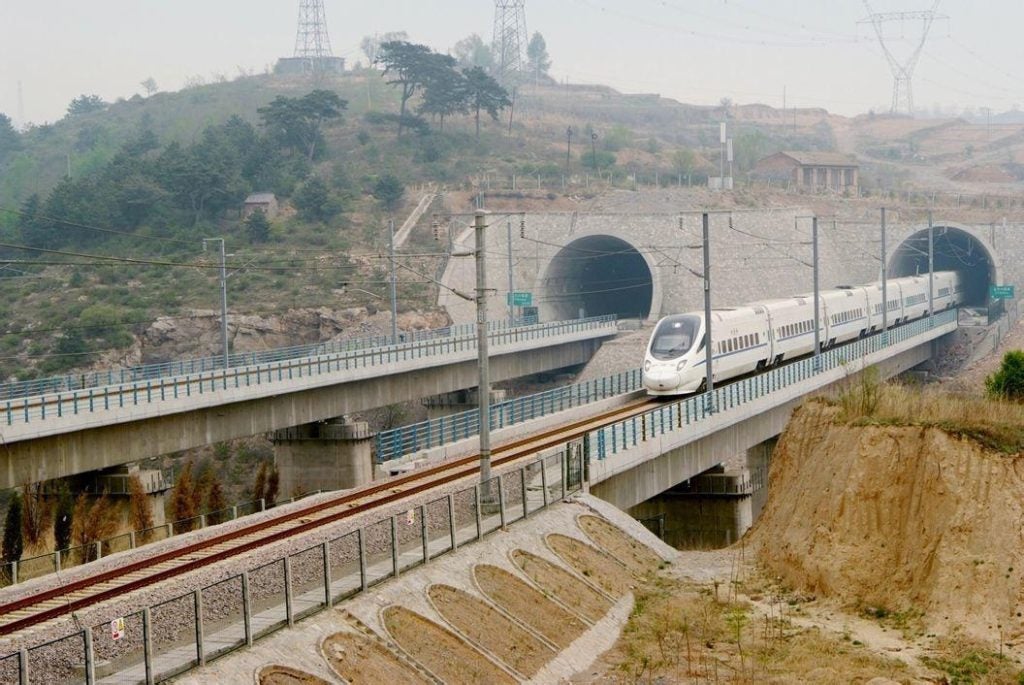
10. Taihang Tunnel, China: 27.8km
The 27.8 km Taihang Tunnel passes through the Taihang Mountains in north-central China. The twin-tube tunnel, which was completed in 2007 after two years of construction, was built as part of the Shijiazhuang–Taiyuan railway, which cuts through the Taihang Mountains. The tunnel passes through the main ridge of the Taihang Mountains, known as the Yue Xiao Mountain.
The left track is 27,839m long and the right track is 27,848m, with 35m separating the two tunnels. The twin-tube tunnels, which have a maximum cover of 445m, are connected every 420m by transverse connections. Services through the tunnel operate at 250km/h, cutting the journey time between Shijiazhuang and Taiyuan by over 80%, from six hours to one hour.
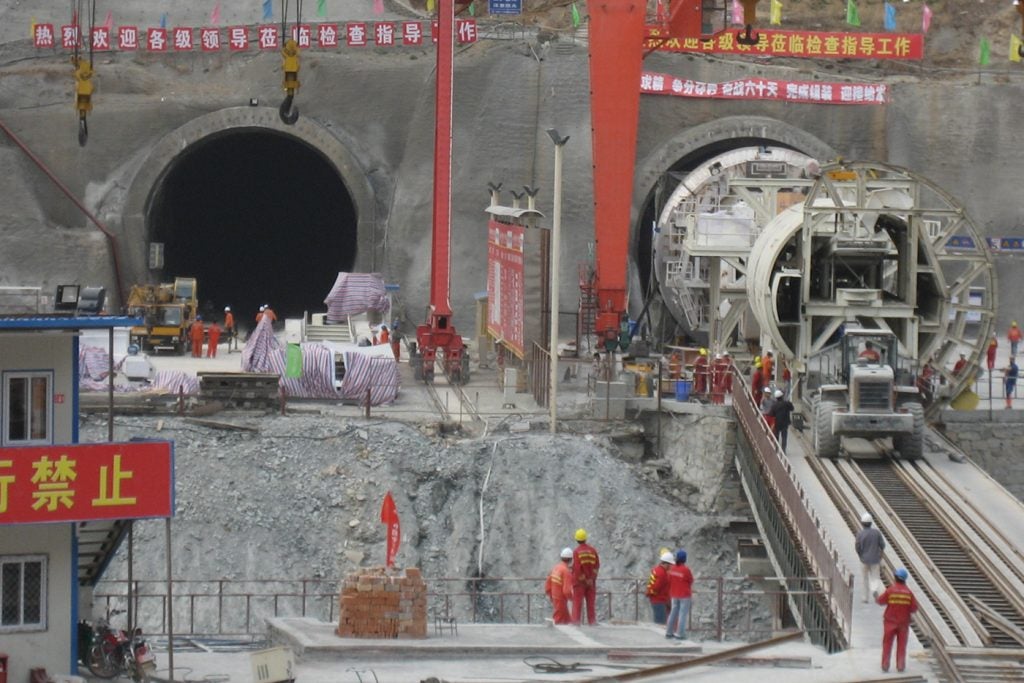
9. West Qinling Tunnel, China: 28.2km
The West Qinling Tunnel is a railway tunnel that buts through the Quinling, otherwise known as the Qin Mountains, in Northwest China. The tunnel forms part of the Lanzhou–Chongqing railway and is the longest of several tunnels passing through the mountain range.
The 28.23km dual-bore railway tunnel took over five years to complete, using both Tunnel boring machines and drill and blast methods, opening in 2016. The West Qinling Tunnel hits a maximum clearance of 1,400m and is designed with an inclined shaft in the central section due to the altitude of the entrance and exit of the tunnel differing by around 40m.
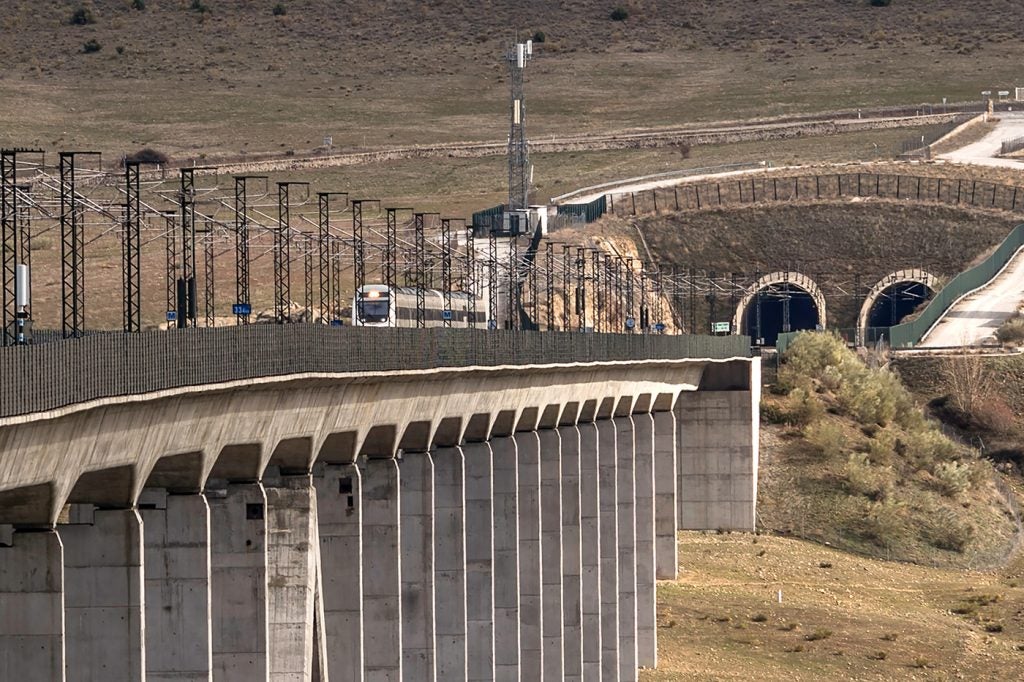
8. Guadarrama Tunnel, Spain: 28.4km
The Guadarrama Tunnel is the longest rail tunnel in Spain. The 28.4km twin-tube tunnel cuts through the Sierra de Guadarrama mountain range as part of the Madrid–Valladolid high-speed railway. The two parallel tunnels are 30m apart and reach a top altitude of 1,200m within the mountain range.
The tunnel was opened in 2007 after five years of construction and has an interior diameter of 8.5m. Interconnection passages connect the two ballastless track tunnels at 250m intervals, and there is also an emergency room located in the middle of the tunnel that can accommodate up to 1,200 people.
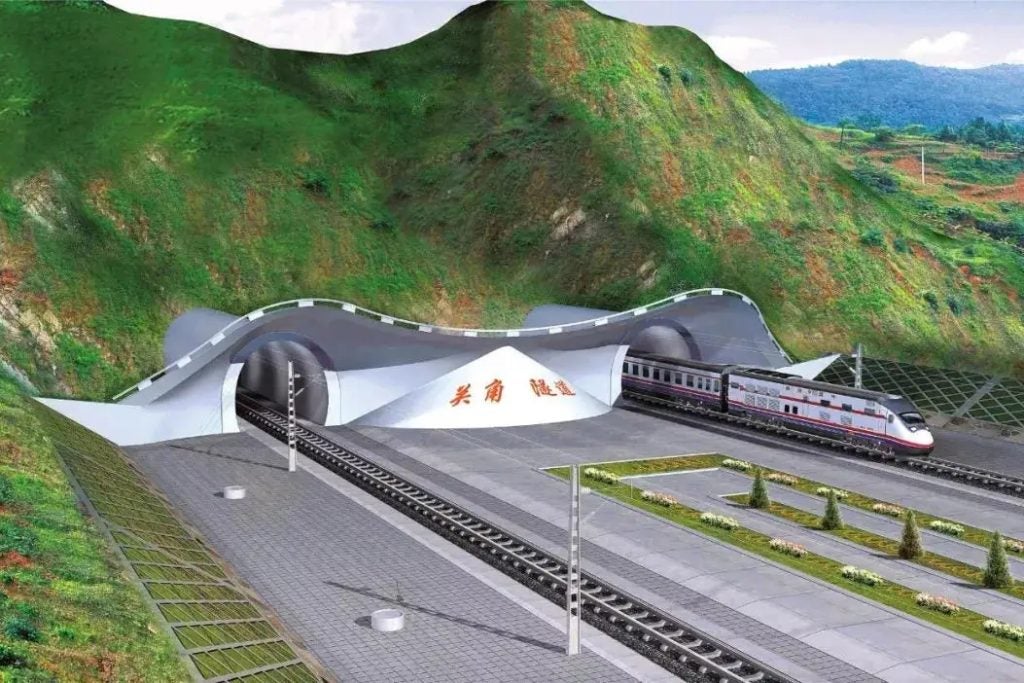
7. New Guanjiao Tunnel, China: 32.7km
The New Guanjiao Tunnel, also known as the Guan Kok Tunnel, is a 32.65km rail tunnel on the 2nd line of the Qinghai–Tibet Railway passing through the Guanjiao Mountain in northwest China. It is the longest plateau railway tunnel in t he world.
The dual-bored tunnel is designed as two parallel single-track tunnels for trains operating at speeds up to 160km/h. The tunnel was bored in difficult geological conditions and at high altitudes, exceeding 3,300 metres above sea level. Construction on the tunnel began in 2007 and it opened in 2014, cutting journey time across the Guankou Mountains from two hours to 20 minutes.
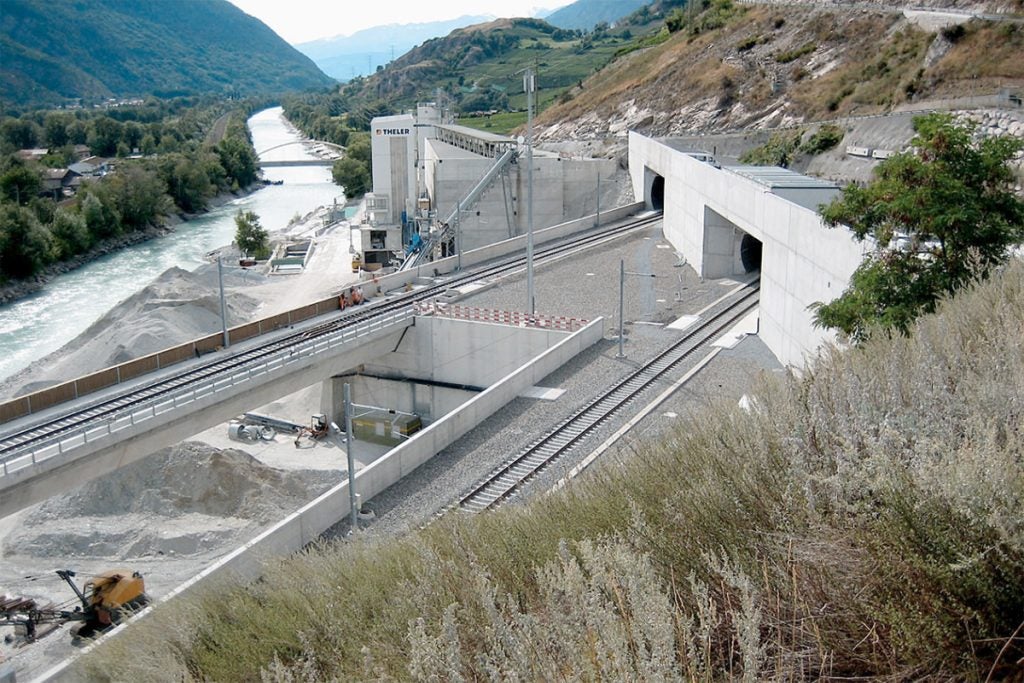
6. Lötschberg Base Tunnel, Switzerland: 34.6km
Lötschberg Base Tunnel, built through the Alps in Switzerland, is a 34.6km tunnel for passenger and freight trains, built as part of the New Railway Link through the Alps (NRLA). The Tunnel cuts through the Bernese Alps, connecting the town of Fruitigen on the Northern side to Raron on the Southern side.
The tunnel, which initially opened in 2007, was designed with twin single-track tubes, but it was only one of the tubes was fully built, with the second tunnel shaft bored but not fully completed.
This has resulted in congestion due to the 21km single-track section of the tunnel, with a decision on whether to complete the second tunnel expected to be made in 2023. The two tubes are connected every 333m by transverse tunnels. The Lötschberg Base Tunnel features a non-ballasted track, with trains operating at 250km/h.
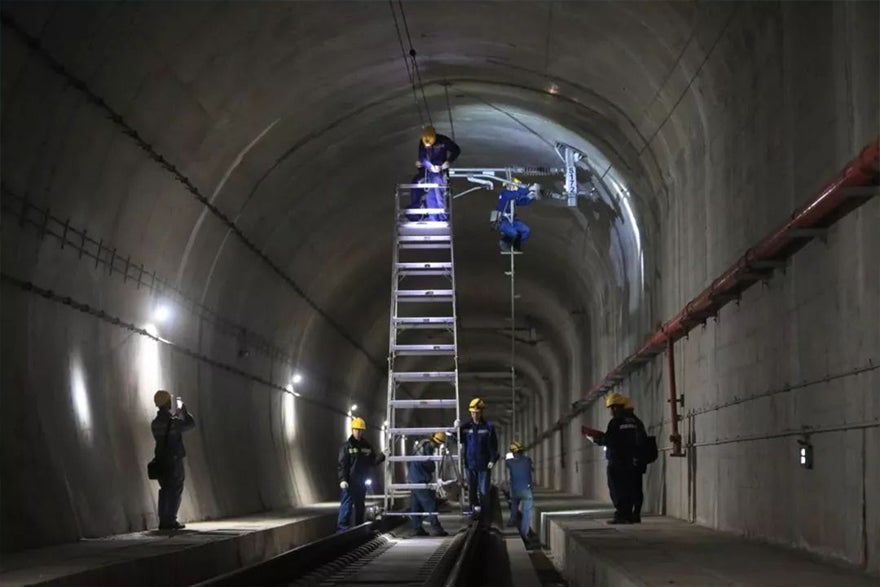
5. Songshan Lake Tunnel, China: 38.8km
The Songshan Lake Tunnel is located between Jiao Station and Changping East Station on the Dongguan–Huizhou Intercity Railway, also known as the Guanghui Intercity Railway, in southern China.
At a total length of 38.82km, it is the longest national railway tunnel in mainland China, containing six subterranean stations. With a design speed of 200km/h, 31 pairs of trains pass through the tunnel every day. Construction on the twin-tube tunnel started in 2013 and was completed in 2016, with services commencing through the Songshan Lake Tunnel at the end of 2017.
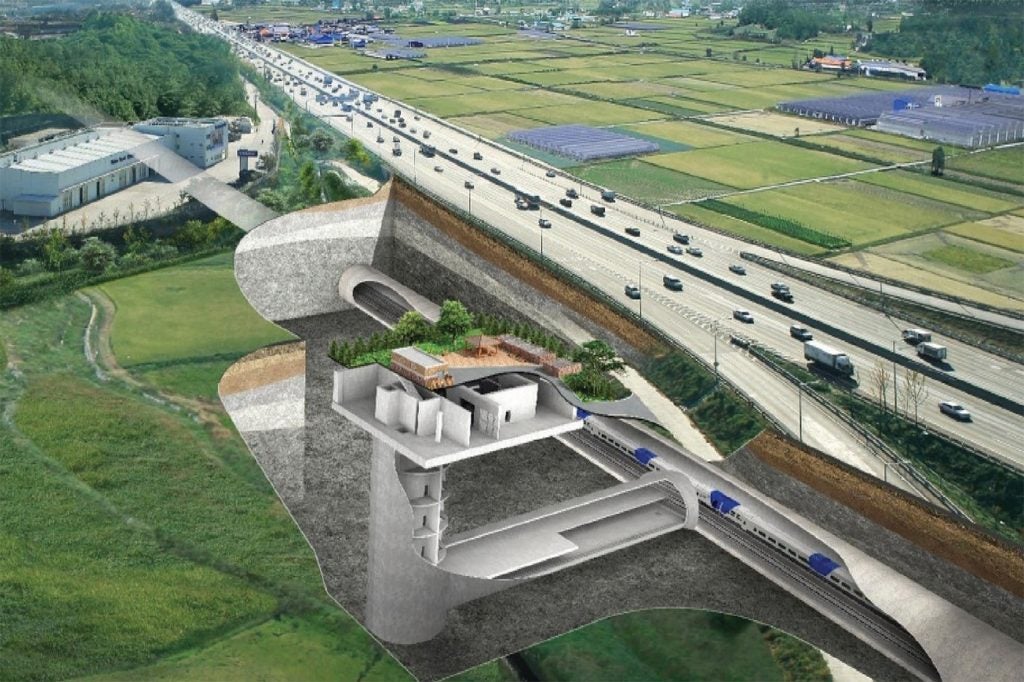
4. Yulhyeon Tunnel, South Korea: 50.3km
The Yulhyeon Tunnel is a 50.3km railway tunnel in Gyeonggi Province, South Korea. Opened in December 2016, it tunnel took over 5 years to complete. The tunnel forms the majority of the 61.1km Suseo High-Speed Railway, which connects Suseo in Seoul to Pyeongtaek to the south of the country’s capital.
The tunnel, which consists of a double-track tube, is designed for a maximum speed of 300 km/h, with an average cruising speed of about 240 km/h due to the intermediate stop at Dongtan Station in the southern part of the tunnel. It was constructed using the New Austrian Tunnel Method, in a $90m project that took four years to complete.
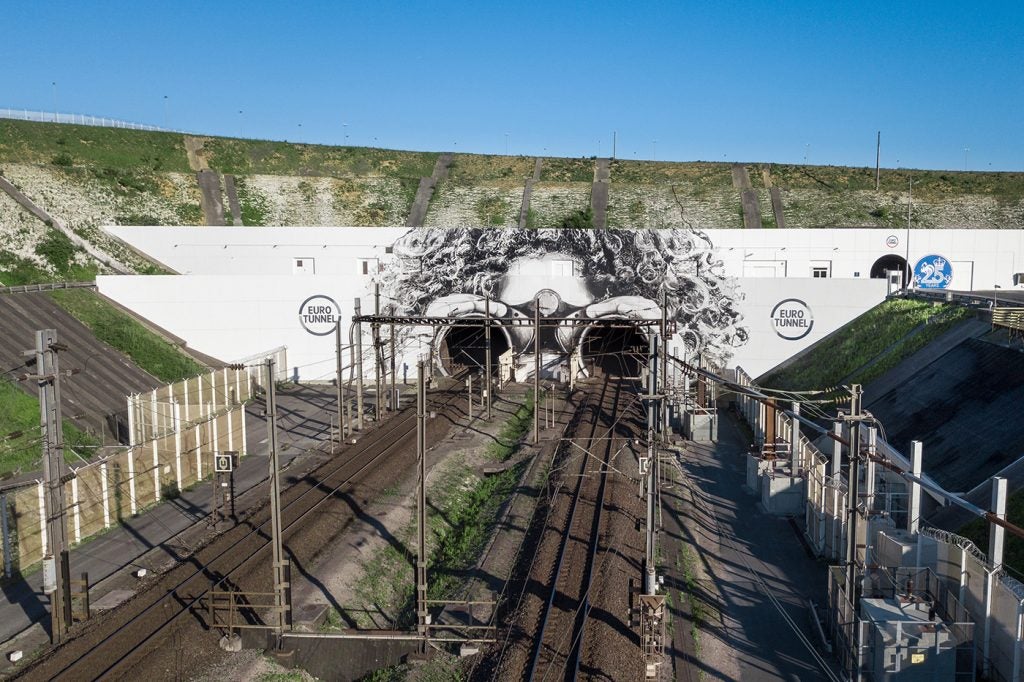
3. Channel Tunnel, France/UK: 50.5km
The 50.5km long Channel tunnel, connecting France and the UK via the English Channel, is the longest undersea rail tunnel in the world. It connects Coquelles in France to Folkestone in the UK.
The $14.7bn twin-tube tunnel was opened for operations in 1994 after six years of construction work. A service tunnel that allows access to maintenance and emergency rescue teams runs between the two main single-track tunnels. Cross passages connect the main tunnels to the service tunnel at 375m intervals, and the undersea tunnels feature two cross-over connections to allow trains to pass from one track to another.
The Channel Tunnel comprises three sections; a 9.3km underground segment in the UK, a 38km undersea tunnel and a 3.2km underground portion in France. All three sections have a diameter of 7.6m, whereas the service tunnel has a diameter of 4.8m.
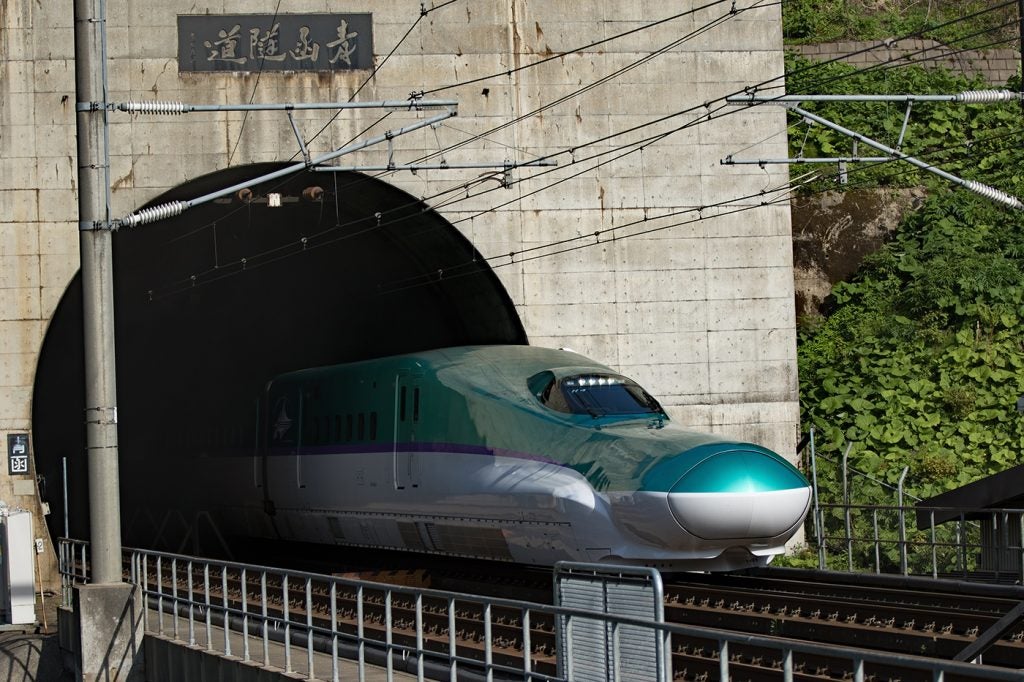
2. Seikan Tunnel, Japan: 53.9km
The 53.85km Seikan tunnel is the longest and deepest rail tunnel in Asia. It passes under the Tsugaru Strait, connecting the Japanese islands of Hokkaido and Honshu. Built 100m below the seabed and 240m below sea level, it was opened in 1988 and is used by both high-speed Shinkansen services and regular regional trains. 23.3km of the tunnel lies under the seabed, making it the world’s second-longest undersea tunnel after the Channel Tunnel.
The tunnel was built using 168,000 tonnes of steel, 1.74 million cubic metres of concrete and 2,860 tonnes of explosives. Two stations, Tappi Kaitei and Yoshioka Kaitei, are located inside the tunnel. The final section to Sapporo is expected to be completed in 2031 and is will reduce the Tokyo-Sapporo journey to five hours.
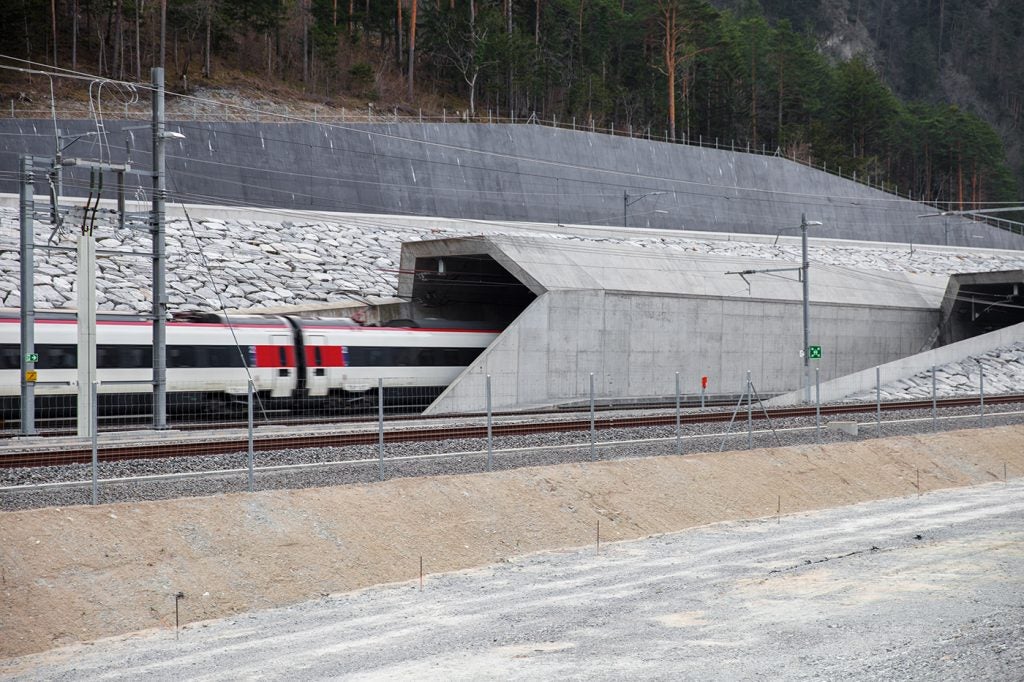
1. Gotthard Base Tunnel, Switzerland: 57.1km
Opened in 2016, the Gotthard Base Tunnel is a 57.09km (35.5-mile) railway tunnel that passes through the Swiss Alps. It is the world’s longest rail tunnel and the first low-level flat route through the Alps.
The Gotthard Base Tunnel is part of the NRLA, which also includes the Ceneri Base Tunnel and the Lötschberg Base Tunnel. The tunnel has allowed for increased capacity through the Alpine barrier, especially for freight on the Rotterdam–Basel–Genoa corridor, allowing for a modal shift from trucks to trains.
The tunnel also provides a faster connection between the canton of Ticino and the rest of Switzerland, as well as between northern and southern Europe, cutting the Basel/Zürich–Lugano–Milan journey time by one hour.







